Major goat industry event outcomes
In September, more than 100 goat industry participants descended on Condobolin Agricultural Research and Advisory Centre for the first Measured Goats Field Day.
The event provided industry with a ‘first look’ at the Goat Genomic Reference Herd – giving participants a firsthand opportunity to see research driving genetic gain in Australia's goat industry.
Hosted by the NSW Department of Primary Industries and Regional Development’s Measured Goats Team, the event showcased findings from the Measured Goats and Going Ahead with Goats projects, with numerous takeaways summarised below.
Industry export performance
- In FY2024–25, both volume and value of goatmeat exports were the highest on record for a financial year. Australia exported 55,486 tonnes of goatmeat to 39 destinations worldwide − a 31% volume increase compared to FY2023–24.
Kid survival and growth
- For kid survival (pregnancy scanning to weaning), Rangeland does significantly outperformed Boer and Kalahari does. Further data will be presented at the next Condobolin field day.
- Meat bucks averaged higher Post Weaning Weight (PWT) breeding values than Rangeland bucks, but there were Rangeland bucks that had better or similar PWT breeding values than the lower performing Meat bucks.
- Between the bucks with the best and worst PWT breeding value in Cohort 1 of the Measured Goats project, there was an estimated $2,975 lifetime breeding difference in the value of their progeny’s carcases (assuming 250 kids produced in their lifetime, mated to the same doe base, dressing percentage 45% and $7/kg carcase weight (cwt)).
What is DNA teaching us about Australian goats?
- Rangeland goats are an Australian-specific goat breed and are highly diverse. They are genetically distinct from all major international breeds tested and from all other Australian goat breeds.
- Australian Boer and Kalahari goats exhibit 90% genetic similarity. The Boer and Kalahari populations can be managed as a single breed in genetic analysis. Commercial breeders are encouraged to select across different meat breeds to choose animals best suited to their breeding objective rather than limiting themselves to a single breed.
Wethers’ meat quality traits
- For almost all meat quality traits measured in Cohort 1 wethers, there was greater variation within breeds than between breeds. With continued research and a focus on genetic selection, producers will be able to achieve genetic gains in specific meat quality traits across all goat breeds.
- Amongst the Cohort 1 wethers, a large amount of variation existed in shear force (tenderness), intramuscular fat (marbling) and loin area − highlighting the potential for product segregation and the creation of premium goatmeat brands based on quality.
Continued producer diligence
- Diseases affecting reproduction performance have been detected in recent surveillance of goat herds. Producers are encouraged to investigate breeding soundness and undertake diagnostic testing if any of the following are witnessed in herds: abortions, low pregnancy rates or udder problems.
In summary
The Measured Goats Field Day demonstrated research in practice and connected producers, researchers and service providers across NSW, SA and Queensland. Attendees included a group of Queensland producers participating in a five-day ‘Beyond the Border’ goat’s supply chain tour planned around the field day − offering a valuable professional development opportunity.
During the day, participants were able to preview Cohort 2 weaners − bred from Meat and Rangeland sires − against breeding values. The infrastructure used to handle the goats and collect data at the research station was also available for inspection.
A notable highlight of the event was the inclusion of goatmeat steaks in the catering − sourced from the first drop of kids bred at Condobolin. Participants were able to match their eating experience with data collected on the animal whose steak they ate − including carcase weight, dressing percentage, GR fat depth, intramuscular fat, eye muscle area, and shear force. This experience resulted in a 7.2 consumer satisfaction score and included participants who had never eaten goatmeat.
Considering the number of participants who are already planning their attendance of the 2026 Field Day, it was clearly a huge success.
What’s next?
Plans are underway to make next year’s Field Day even bigger and better. Please add 9 September 2026 to your calendars for the next field day.
For more information contact Trudie at trudie.atkinson@dpird.nsw.gov.au



